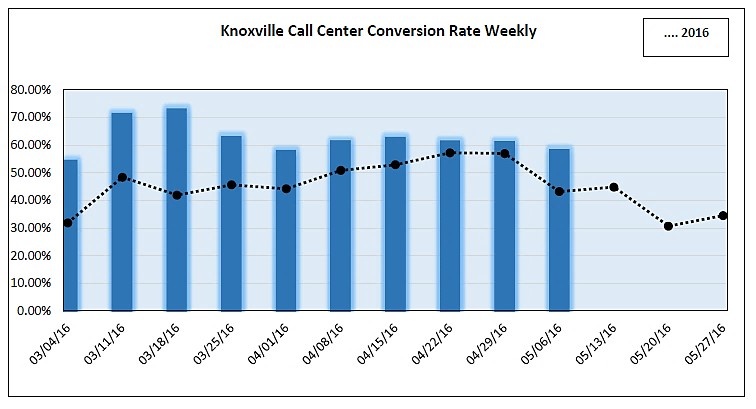At the heart of process improvement is benchmarking and Key Performance Indicators (KPIs). Lord Kelvin, the British scientist said, “You can’t improve something you haven’t measured”. Here are 5 things to consider in using benchmarking in your business to improve productivity, reduce cost and increase customer service.

Use external benchmarking to compare yourself to other similar businesses
External benchmarks are helpful because they can tell you what can be achieved. Below is an example of recent benchmarking with 8 companies and their contact center data. All of these companies have three items or less on an order, and are in direct to customer businesses. The table shows the total time in minutes including call and wrap up time it takes per order for an entire year.
Total Call Handling Time for 8 Companies
|
A - 2.78 min |
B - 2:57 min |
C - 5.5 min |
D - 7.38 min |
|
E - 4.2 min |
F – N/A |
G - 3.3 min |
H - 4.2 min |
Even before receiving the data, the CEO of company D with 7.38 minutes per order immediately volunteered they knew they had problems with the management of the contact center. His experience in other similar businesses and comparing benchmarks with other companies told him the total call handling time should be under 4.5 minutes per order and maybe lower.
The size of the company does not mean it’s efficient (or profitable).Companies B, D and G are over $100 million in sales annually. We see this all the time in working with companies as we do operational assessments to improve performance. Size doesn’t mean efficiency. Actually that’s great news for small to moderate sized companies competing especially on the Internet. But use benchmarking to give you an idea of what is realistic then look deeper at the processes.
Quality of Customer ServiceThe table above does not address the quality of the calls either. If you looked at those companies with lower call times, you might see some are efficient but maybe they don’t provide world class customer service. Does the short call time mean the customer is rushed, reps are brisk or there aren’t standards for how the customer is handled? From a process perspective, do you have a call monitoring program in place to balance customer service with efficiency?
Actual Performance, Goals and HistoryA benchmark is only one indicator of performance; hopefully it tells you where to look for process and quality improvement. A single data point doesn’t tell the whole story and it certainly can’t show you a trend. In looking at the call handling table above, it doesn’t tell us what the center’s goals are or the history compared to similar seasons or call volume in this business. For example, many centers may have lower total handling times during their peaks. Why? The customer order volumes can be 5 to 10 times higher than average day in non-peak. While there are more reps on line there is often a natural efficiency generated by volume (sometimes).
How will you collect and display the data?There are a couple issues here. Are your systems able to give you the data that best suits your company’s needs from a benchmarking perspective? The answer is generally “NO”. Dashboard software is now available that can help you extract from your transaction systems the key data from which you can develop the KPIs required to manage your business.
However a knowledgeable business analyst will need to be involved initially to normalize the base data and definitions from various systems and define it as the KPI you need.
How will you feedback results to managers and employees? Here is an example one client displays in the lunch room weekly to communicate the call to order conversion rate. Other graphs used include call handling time, number of calls handled and cost per call, etc. In the fulfillment center performance data is displayed for shipped orders their costs, orders with errors, cost of outbound shipping per package, on time shipping, etc.

As you think about KPIs and performance, what are the KPIs important to your business and what behavior and processes are you looking to change and re-enforce?





SHARE